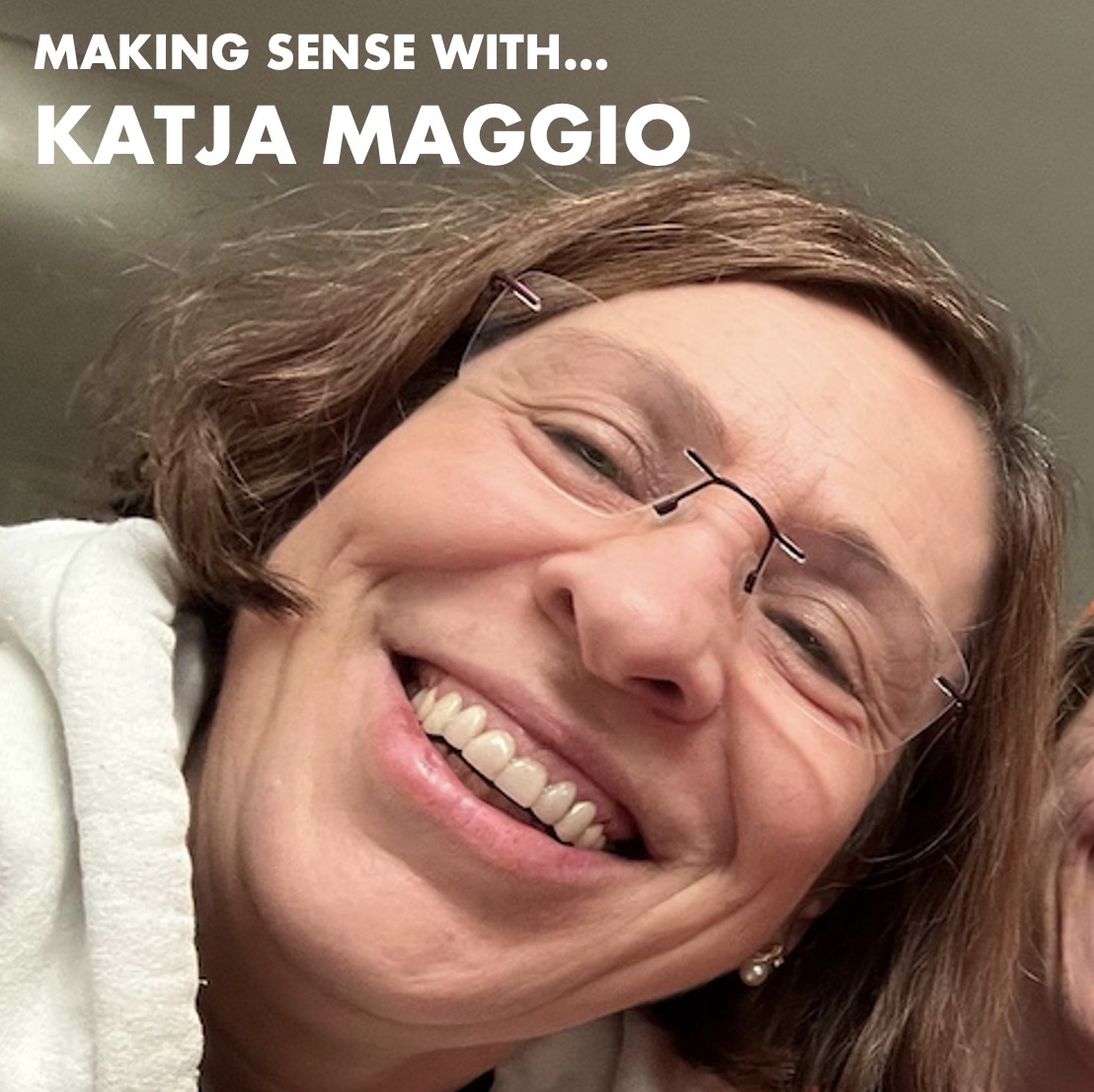Photo courtesy of Katja Maggio
What makes a semiotician tick? SEMIOVOX’s Josh Glenn has invited his fellow practitioners in the field of commercial semiotics, from around the world, to answer a few revealing questions.
Amsterdam…
SEMIOVOX
When you were a child/teen, how did your future fascination with symbols, cultural patterns, interpreting “texts,” and getting beneath the surface of daily life manifest itself?
KATJA MAGGIO
I was a “third culture” child — born from German Mum and Italian Dad, living in Italy but speaking both German and Italian with my mum. I did not distinguish between the two languages, so linguistic awareness and interest started at age five, when I went to school and wondered, “Why don’t these other children understand me?” Not even the teacher could. Perhaps because the rules of its “language” are precise and predictable, mathematics would become my best subject. I’d end up majoring in Statistics and Economics.
In my late twenties, when I moved to the UK I once again had a bit of a rough landing, despite being a fluent English speaker. I lacked what you might call the “everyday cultural toolbox.” (Doesn’t everyone know you queue at the bus stop?) I felt like a Martian among Earthlings — which was tough at first, but it got me interested in what lies beneath a culture’s surface.
SEMIOVOX
Describe your first encounter(s) with the theory and practice of semiotics.
KATJA MAGGIO
While in London, I came across Ginny Valentine at a professional conference. She was a wonderful public speaker and opened my eyes to Semiotics. At the time, I was in a capability-building role, looking for “anticipatory learning” — learning that is not focused on the past, that is, but future-oriented. As a statistician, I was completely fascinated by Semiotics — which opened up a “reading key” to the world that was diametrically opposed to my own angle. I ended up earning a degree in Cultural Studies at the Open University; the course I loved the most was Discourse Analysis.
As a practitioner in the cultural analysis space, what I didn’t appreciate was the “black box” fixed approach common in England at the time. Extremely long and detailed reports, and the same methodology every time — very little “flex” to adjust to different use cases. We’ve come a long way since then, thankfully.
SEMIOVOX
How did you find your own way to doing semiotics?
KATJA MAGGIO
I’m a Strategy and Insights person, not a semiotician. But ever since I started at Procter & Gamble (in 2008), I’ve championed the methodology. Applied semiotics is an extremely effective tool for brand building and value creation, and I had a lot of success with the tool at P&G — which has fed my desire to keep using it across many brands and diverse catagories for P&G, Coty, and now JDE Peet’s.
SEMIOVOX
What are the most important attributes of a good semiotician?
KATJA MAGGIO
I look for three attributes in the semioticians with whom I collaborate:
- Interrogating culture with curiosity
- Converging on and deriving key conclusions from the analysis
- Presenting the work straightforwardly, without falling in love with one’s own voice
SEMIOVOX
What three books about semiotics have you found the most useful and enlightening in your own work?
KATJA MAGGIO
- [British sociologist and cultural theorist] Angela McRobbie’s The Uses of Cultural Studies is the Open University textbook — very nicely written and informative.
- I love reading semioticians’ applied business cases. One outstanding example that has stuck with me was Malcolm Evans’ case study about refreshing the Guinness brand. A classic!
- [British social anthropologist] Kate Fox’s “Watching the English” isn’t a traditional case study, but it’s a great example of applying semiotics to everyday life in order to surface unspoken codes of behavior.
SEMIOVOX
When someone asks you to describe what you do, what is your “elevator pitch”? How do you persuade a skeptical client to take a chance on using this tool?
KATJA MAGGIO
I keep things very simple. I say, “Semiotics is about understanding meaning and culture” — and then I offer a straightforward case study story to bring the methodology and its output to life in a relatable way. Simple does it.
SEMIOVOX
What specific sorts of semiotics-driven projects do you find to be the most enjoyable and rewarding?
KATJA MAGGIO
I enjoy most bringing semioticians in on brand turnaround and value creation projects.
SEMIOVOX
What frustrates you about how semiotics is practiced and/or perceived, right now?
KATJA MAGGIO
Semioticians too often go on and on about the analysis, without distilling it to the “so what?”
SEMIOVOX
Peirce or Saussure?
KATJA MAGGIO
Why choose between them? Saussure is useful for sensitizing client-side teams on where there may be a disconnect between what they intended to communicate and what the target consumer understood. Peirce is useful when it comes to brand building — which involves expanding the analysis to non-linguistic signs.
SEMIOVOX
What advice would you give to a young person interested in this sort of work?
KATJA MAGGIO
Spend some time abroad, so you can better appreciate what you take for granted in your own culture.
MAKING SENSE series: MARTHA ARANGO (Sweden) | MACIEJ BIEDZIŃSKI (Poland) | BECKS COLLINS (England) | WHITNEY DUNLAP-FOWLER (USA) | IVÁN ISLAS (Mexico) | WILLIAM LIU (China) | SÓNIA MARQUES (Portugal) | CHIRAG MEDIRATTA (India / Canada) | SERDAR PAKTIN (Turkey / England) | MARIA PAPANTHYMOU (Greece / Russia) | XIMENA TOBI (Argentina) | & many more.
Also see these series: COVID CODES | SEMIO OBJECTS | MAKING SENSE | COLOR CODEX


